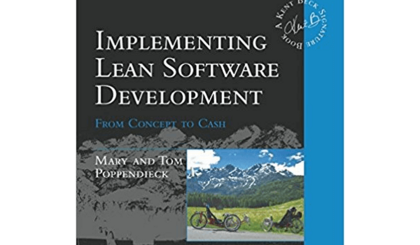Lean Friction Lab with Mary & Tom Poppendieck
You have great software engineers. They work on autonomous product teams that deliver frequently. The products are doing well. But… there is always a but. Things could be better. Something is frustrating team members or disappointing customers or slowing things down. What is it?
Friction. No matter how well things are going, there will always be friction. Consumers experience friction when using your product. Friction delays a team’s response to a product request. Friction makes the code difficult to change. Differing expectations create friction among team members. Competing goals create friction between teams.
Learn first-hand from thought-leaders Mary and Tom Poppendieck how to reframe your product team’s approach from the perspective of lean principles. Mary and Tom have pioneered the application of Lean Thinking to software development and documented their principles in four books.
The purpose of this workshop is to identify the largest source of friction for each team in attendance – the biggest thing that keeps team members from doing their best work – and come up with a team plan for reducing that source of friction. The workshop will give teams a pattern for reducing friction that can be used again – and again – to identify and address points of friction on an on-going basis.
If you are interested in organizing this training for you contact us.
Scope
- Framing the Problem
- Flow vs. Friction
- Exercise: Map your customers’ journey /or/ Map your value stream
- Feedback: Lessons from Lean Startup
- Identifying Team Friction. Possible Discussion Topics:
- How does your team decide what to do next?
- Does the code base get in your way?
- How are problems resolved?
- Lessons from Others. Possible Topics:
- Purpose
- Antifragile Systems
- Cognitive Biases of Teams
- Framing the Future
- The Improvement Kata
- Exercise: Visualize the Future
- The Aware Organization
- Consumer Insight
- Company Intent
- Situational Awareness
- Exercise: The Data-Driven Team
- The Learning Organization
- Know what people actually do and why
- Work backward from the future
- Make improvement a habit
- Exercise: What to do Tomorrow
Learning objectives
By attending this course you will learn:
- Why friction is a good measure of a system’s performance
- How to map your customer’s journey or your development process and identify points of friction
- Typical points of friction and how other product teams have confronted them, for example:
- Causes of friction in the customer journey
- Why data-driven teams engineer better solutions
- How failure injection can reduce friction
- Eliminating the need for heroics
- Cognitive biases of teams
- Why and how to visualize the future as a basis for action
- How to attack friction as a part of your team’s regular activities
- Deciding what to do next
- Slowing down in order to speed up
- Solving problems across teams
